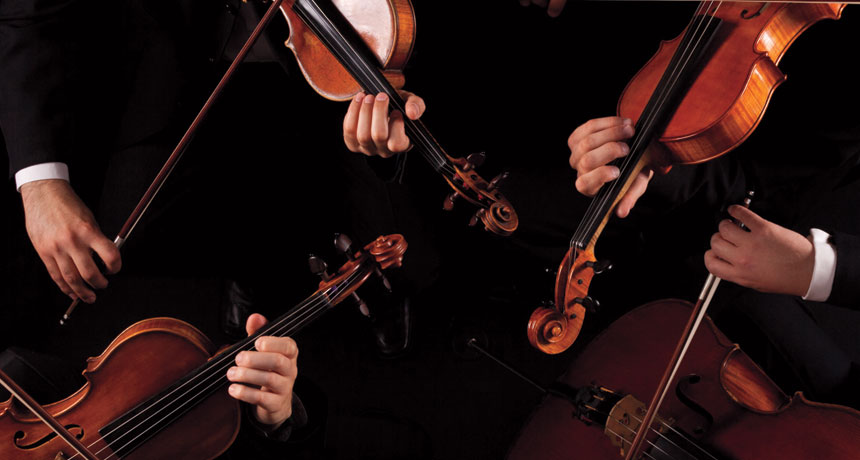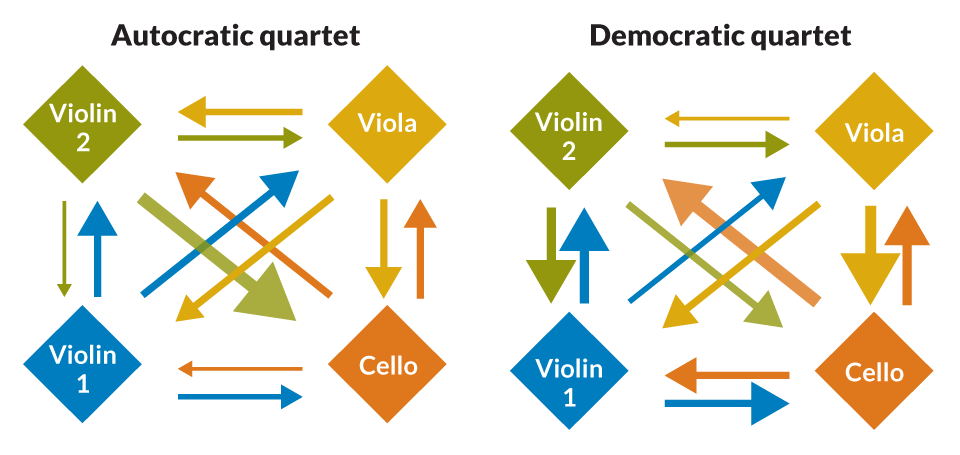How string quartets stay together

STAYING IN SYNC Some ensembles are more autocratic — following one leader — while other musical groups are more democratic, making corrections equally, to stay together while playing a piece.
EmirMemedovski/iStockphoto








